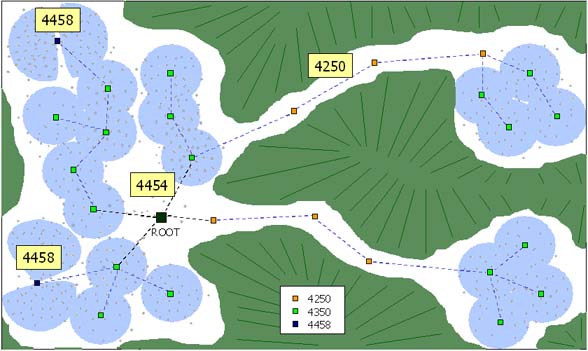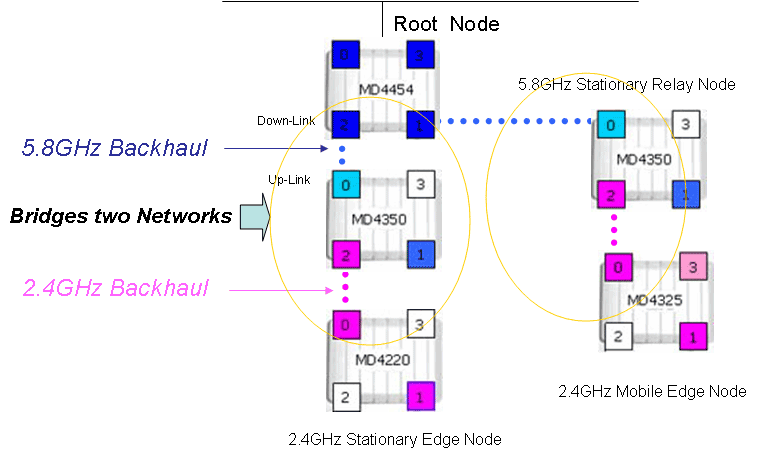|
||
|
Mesh applications often require a string-of-pearls formation where the end-to-end path is non line-of-site (NLOS). Additionally, there may be points along the path where only backhaul is needed - no client Access Point. The baseline two radio MD4250-AAxx supports this requirement. If wireless client access is needed, the MD4350-AAIx has one 2.4GHz Access Point (AP) as the third radio in slot 2, in addition to the 5.8GHz wireless backhaul up link and downlink radios is slots 0,1 respectively (see above). The third radio is also used to bridge networks. In the figure below, a 5GHz based backhaul is bridged to a 2.4GHz based sub tree.
Higher client
density or congested areas require more focused
reception. MD4458-AAII houses
two access points to provide twice the client access
radio power. The two AP radios may be on the same
channel and not interfere, using sectored antennas. The
4458-AIII may also serve as
an edge node: with one uplink and three AP radios |
||






